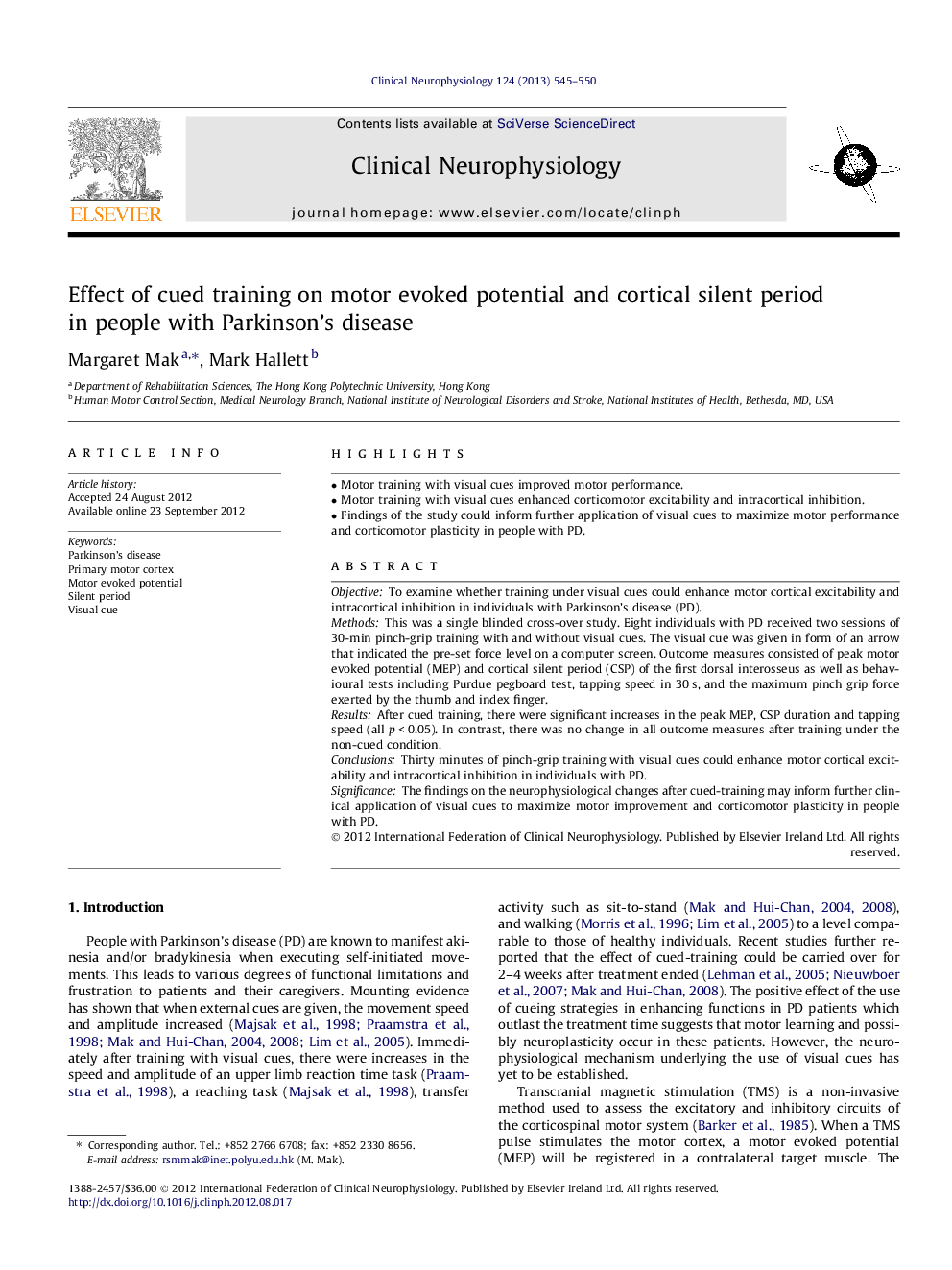| Article ID | Journal | Published Year | Pages | File Type |
|---|---|---|---|---|
| 3044367 | Clinical Neurophysiology | 2013 | 6 Pages |
ObjectiveTo examine whether training under visual cues could enhance motor cortical excitability and intracortical inhibition in individuals with Parkinson’s disease (PD).MethodsThis was a single blinded cross-over study. Eight individuals with PD received two sessions of 30-min pinch-grip training with and without visual cues. The visual cue was given in form of an arrow that indicated the pre-set force level on a computer screen. Outcome measures consisted of peak motor evoked potential (MEP) and cortical silent period (CSP) of the first dorsal interosseus as well as behavioural tests including Purdue pegboard test, tapping speed in 30 s, and the maximum pinch grip force exerted by the thumb and index finger.ResultsAfter cued training, there were significant increases in the peak MEP, CSP duration and tapping speed (all p < 0.05). In contrast, there was no change in all outcome measures after training under the non-cued condition.ConclusionsThirty minutes of pinch-grip training with visual cues could enhance motor cortical excitability and intracortical inhibition in individuals with PD.SignificanceThe findings on the neurophysiological changes after cued-training may inform further clinical application of visual cues to maximize motor improvement and corticomotor plasticity in people with PD.
► Motor training with visual cues improved motor performance. ► Motor training with visual cues enhanced corticomotor excitability and intracortical inhibition. ► Findings of the study could inform further application of visual cues to maximize motor performance and corticomotor plasticity in people with PD.
